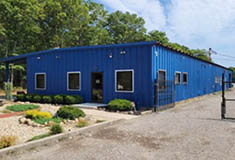The Phase One Environmental Site Assessment (ESA) vs. other risk mitigation products - by Chuck Merritt

In 1994, the first approved standard for Environmental Site Assessments (ESA’s) was released by the American Society of Testing Materials (ASTM). The standard has been revised several times since then and in 2000, it was approved by Congress as meeting the definition of All Appropriate Inquiry (AAI). This approval also meant that the standard was required to be reviewed and amended every five (5) years or face a sunset clause. Since there is no other ESA standard for buyers or lenders of commercial real estate, the ASTM committee works diligently to improve its quality and meet the congressional mandate.
Along with the Phase One standard, ASTM has a Transaction Screen Assessment (TSA) standard that does not include all the bells and whistles or meet the definition of the AAI rule. In addition, only the Phase One ESA provides the legal protections afforded when seeking assistance under the Comprehensive Environmental Response, Compensation, and Liability Act (CERCLA). Since lending institutions are a large user of environmental reports, their internal policies can dictate which report they will require in conjunction with the loan request. Considerations such as the asset class, amount of the loan and location of the property may be part of the lender’s criteria in establishing which report will be required. Lenders then typically reach out to consultants on their approved list and request a quote for the service needed. Lenders have also introduced reports they require that do not have any ASTM standard. The Records Search Risk Assessment (RSRA) style report has become more popular with some lenders and mirrors the Small Business Administration (SBA) protocols. However, no site visit is required within this scope so, consultants typically review a computer database report and historical maps from their office.
Since the TSA report and RSRA reports do not meet the AAI rule, they are not recommended to be used during the acquisition of a property by a buyer. There is nothing wrong with starting with one of these products to get a snapshot of a property and adjacent properties that may have a history of environmental problems. Based on the results, a potential purchaser can decide if they want to conduct more investigation and upgrade the work product to an AAI compliant Phase One. They may also decide not to proceed with the transaction should a significant finding be discovered, especially in New York which is a “buyer beware” state. This means the seller is under no obligation to disclose any information about prior environmental impacts or remediations that may have occurred. In addition, the lesser risk mitigation product may not satisfy the lender’s requirements in which more money (and time) will be needed to complete the requirements of the lender.
During due diligence, a buyer is permitted to use whomever they want. There should be a contract between the environmental firm and the client that outlines the scope of work and limitation of that work product. If that company is not recognized by the lender, they may ask for a reliance letter and copy of insurance to accept the report. They may also charge a cursory review fee and have an internal or external agent review the quality of the report.
Many times, borrowers present previously prepared reports to their lender to save on some of the third-party fees. However, this may end up not playing out the way the borrower had hoped. A report prepared for the current owner (or previous lender) that was generated several years ago are typically not accepted by the new lender. In addition, the buyer usually has no right to rely on the report as it was not addressed to them. Reports typically have a disclaimer section outlining who may rely on the contents. This path does not offer the buyer the best representation of due diligence. As the ASTM changes occur frequently (compared to the life cycle of real estate), the report that is handed off to the buyer may not include many of the current requirements. In addition, the quality of reports can vary from company to company. Relying on the contents of a report from a consultant not procured by the buyer whom they trust, can be a bad idea. Asking a consultant to update or certify the quality of another company ends up with reputable companies refusing the assignment for liability reasons.
Considering the cost of a new Phase One that meets the most current ASTM standard will be no more than a couple of thousand dollars, the best approach for a buyer (and lender) is to start new. Previous reports can be helpful in outlining past investigations and cleanups but should not be relied on 100% without verification. There was a recent article published by local news outlet in which the seller’s consultant authored a letter stating that the remediation at a former dry cleaner would cost less than $100,000. However, the regulatory agency supervising the cleanup effort estimated the cost to be $500,000. Without independent verification of the documents, the buyer may have been stuck with this situation or litigating with the seller after closing. A lender involved would potentially have made a loan on an asset that is not worth as much as they thought. This is common situation that environmental consultants and their clients tackle every day and reinforces the need for thorough due diligence.
Chuck Merritt, LEED AP, is the president of Merritt Environmental Consulting Corp., Hauppauge, N.Y.
Suffolk County IDA supports expansion of A&Z Pharmaceuticals


The evolving relationship of environmental consultants and the lending community - by Chuck Merritt
When Environmental Site Assessments (ESA) were first part of commercial real estate risk management, it was the lenders driving this requirement. When a borrower wanted a loan on a property, banks would utilize a list of “Approved Consultants” to order the report on both refinances and purchases.








.gif)
.jpg)